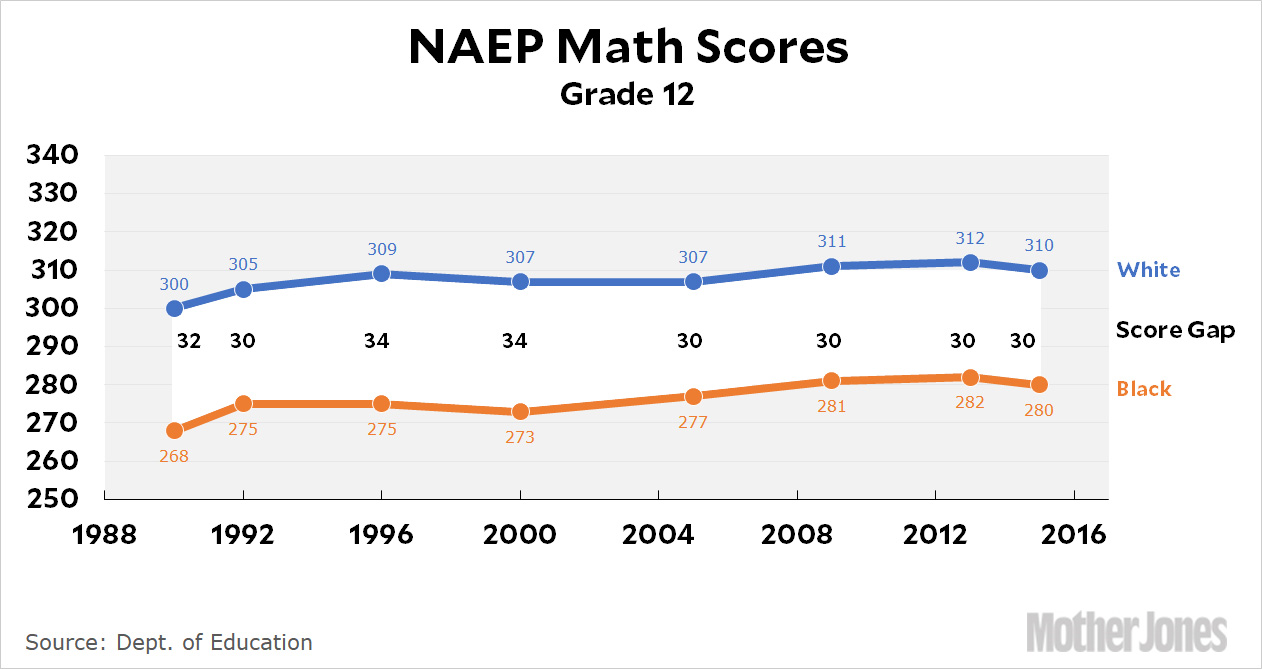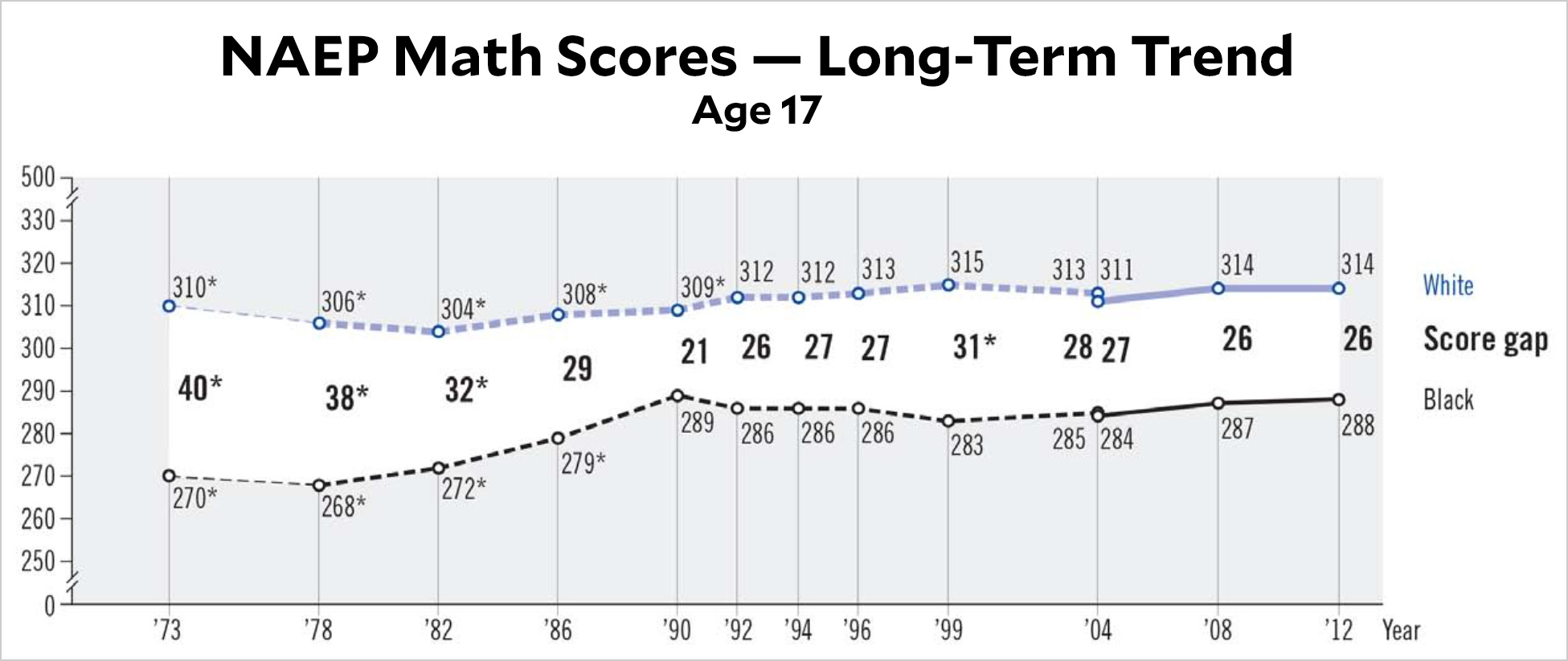Bob Somerby thinks I’ve gotten too gloomy about American education. Back in 2012 I wrote a piece for the magazine subtitled “Students today score better on tests than you did,” but lately I’ve been saying that although 4th and 8th grade kids have improved over time, “a lot of that improvement washes out in high school.” More recently, I also mentioned that the black-white score gap hasn’t gotten any smaller since the end of the ’80s. All of this was based on scores on the NAEP, the most widely respected national achievement test. What do I have to say about this?
First things first: I mentioned the stagnant performance of high school students way back in that first magazine piece. So this is nothing new. But Somerby thinks it’s wrong to focus on 17-year-olds because high school graduation rates have gone up over the past few decades. Higher graduation rates mean that more weak students are staying in school, and we should expect this to hurt their overall performance on tests like the NAEP.
But it turns out that high school graduation rates haven’t really increased. In a seminal paper written in 2010, James Heckman and Paul LaFontaine looked very deeply into this issue and concluded that the increase was mostly a mirage due to a larger number of students who dropped out but eventually got a GED. If you look solely at students who get an actual high school diploma, the graduation rate has been pretty flat:

This chart goes only through 2005, and graduation rates have continued increasing since then. However, the best evidence suggests that this more recent increase is largely a statistical artifact. The actual number of kids who get a high school diploma has most likely remained flat or, at best, gone up a point or two. And since the NAEP is (obviously) taken only by students who are still physically in school, this means that the pool of test takers probably hasn’t changed much even in 12th grade.
So with that out of the way, how are our high school students doing? Here are results over the past few decades for three racial groups:


Reading scores are down slightly and math scores are up slightly. Overall, there just hasn’t been much progress. As I’ve said before, gains in elementary and middle school tend to wash out in high school.
And what about the black-white score gap? Here are the results on both the main NAEP and the long-term NAEP, a special version of the test designed not to change over the years so that comparisons over time can be done more accurately:




The long-term test shows some progress in the ’70s and ’80s in closing the black-white gap, but all four charts show the same thing for the ’90s and beyond: no real progress at all.
There are reasons to be cautious about high school test scores, but we’ve been hearing those reasons for well over a decade now. At some point we have to start wondering what’s going on. How is it that 4th and 8th graders are doing considerably better than they used to, but then they go to high school and lose everything they’ve gained? Is it because those earlier gains aren’t real? Or because our high schools are doing a bad job of building on the more accomplished students they’re being given these days?
I don’t know. Either way, though, the only thing that matters in the end is how students are doing in the end. We can improve the scores of 8th graders forever, but if it all washes out and our high school grads are entering the workforce with the same skills they’ve always had, then we’re not making any real-world progress. And right now, that appears to be exactly the case.













